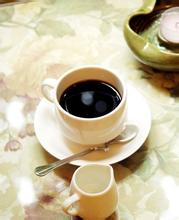Colombia Ramon Coffee Bean Flavor Description Taste Treatment Variety Characteristics
Introduction to the characteristics of Colombian Ramon coffee bean flavor description and taste treatment
Coffee is the pride of Colombians, and the things Colombians like to talk about most, except for their football, which was once one of the best in the world, is the coffee they are proud of. Drinking coffee in Colombia is a pleasure. Not only is it necessary three times a day, but the streets are full of cafes and customers are full of seats from morning till night. There is no instant saying in the cafe. It is now cooked and sold. The young lady pours it with exquisite porcelain bowls, respectfully presents it to the customers, and adds sugar at will. The aroma is pervasive in the room, the bowl is sweet and delicious, and the slow taste is endless in aftertaste. No wonder the local people are addicted to it.
Each inflorescence has 2-5 flowers, without a peduncle or with a very short peduncle; flowers fragrant, with pedicels 0.5-1 mm long; bracts more or less connate at base, dimorphic, 2 broadly triangular, nearly equal in length and width, the other 2 lanceolate, twice as long as wide, leaf-shaped; calyx tube tubular, 2.5-3 mm long, calyx limb truncated or 5-denticulate. Corolla white, length varies from breed to breed, generally 10-18 mm long, top often 5-lobed in Colombian coffee-growing area latitude, altitude, soil, plant origin of species and coffee-making varieties, rain patterns produced by climate and tropical convergence in coffee-growing areas, changing topography, luminosity, favorable temperature range throughout the year, moderate and Rain Water distribution in one day. And include some common cultural practice areas in the process of selective logging and transformation, including washing and drying. Very suitable for the growth of coffee, mild climate, humid air, and can be harvested regardless of season in Colombia, although there are many farms, but the area is small. The area of each farm is only about 2 hectares, and more than 80% of the coffee plantations have only about 5000 coffee trees, an average of 3000. Thus it can be seen that agriculture in Colombia belongs to the small-scale farm type. The locals plant tall trees or banana trees around the coffee trees. Build an Arbor for coffee trees at the seedling stage to ensure the cool and humid environment needed for coffee growth. Columbia beans take the SUPERMO as the highest grade, followed by the EXCELSO, but only selected coffee of more than 18 beans (18cm 64 inches in diameter) can be included in the selection. Colombian coffee has a balanced flavor and a smooth taste, just like a gentleman in coffee. It has a wide range of producing areas, but the coffee in the central mountain area is the best and has a thick texture. The most famous producing areas are medellin, armenia and manizales, which are commonly referred to as "mam". In
Columbia Super Coffee, which has always been light-scented, is the most suitable for those who like light sex. Such people do not want to drink coffee as a sitting thing, from sour, sweet, bitter, astringent experience what profound philosophy of life, just want to simply drink a cup of delicious coffee, a cup of hot Colombian coffee, let these people realize that "the best state of life is rich and quiet." Quiet, because of getting rid of the temptation of external fame and gain; rich, because of having the treasure of the inner spiritual world. They believe that the greatest happiness in life is to reap such an incisive interpretation of the realm.

Important Notice :
前街咖啡 FrontStreet Coffee has moved to new addredd:
FrontStreet Coffee Address: 315,Donghua East Road,GuangZhou
Tel:020 38364473
- Prev

Introduction to the regional treatment method for the flavor description of Ecuadorian coffee varieties
The characteristics of Ecuadorian coffee Ecuador is one of the few countries in South America that produce both Arabica coffee and Robbins coffee. However, as the land suitable for Arabica coffee trees is decreasing, the production of Robbins coffee is gradually increasing. The best Arabica coffee is produced in the Andes, especially in the Chanchagu Valley (ChanchamgoValley), the Andes.
- Next

Introduction to the grinding scale treatment method for the flavor description of El Salvador Pacamara coffee beans
Pacamara coffee beans are so large that they are often stuck in the holes or gaps of the machine during peeling and separation in the treatment field, so the machine must be adjusted from time to time to deal with them separately. Due to the limited initial output of Pacamara, coupled with the fact that there are few large seeds in the country, most washing plants lack experience in handling large coffee fruits, let alone prepare a sieve with a larger mesh for special treatment.
Related
- Detailed explanation of Jadeite planting Land in Panamanian Jadeite Manor introduction to the grading system of Jadeite competitive bidding, Red bid, Green bid and Rose Summer
- Story of Coffee planting in Brenka region of Costa Rica Stonehenge Manor anaerobic heavy honey treatment of flavor mouth
- What's on the barrel of Blue Mountain Coffee beans?
- Can American coffee also pull flowers? How to use hot American style to pull out a good-looking pattern?
- Can you make a cold extract with coffee beans? What is the right proportion for cold-extracted coffee formula?
- Indonesian PWN Gold Mandrine Coffee Origin Features Flavor How to Chong? Mandolin coffee is American.
- A brief introduction to the flavor characteristics of Brazilian yellow bourbon coffee beans
- What is the effect of different water quality on the flavor of cold-extracted coffee? What kind of water is best for brewing coffee?
- Why do you think of Rose Summer whenever you mention Panamanian coffee?
- Introduction to the characteristics of authentic blue mountain coffee bean producing areas? What is the CIB Coffee Authority in Jamaica?

